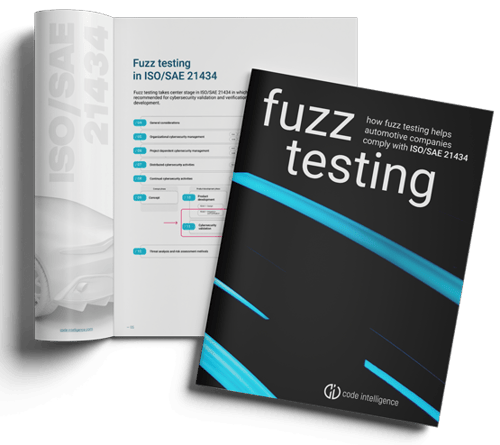How Fuzzing Complements Static Analysis
An automotive supplier using static code analysis detects 32% of bugs solely through fuzzing. Learn how fuzzing complements static analysis (SAST) when testing automotive software.
Static analysis is widely used in the automotive industry, but many bugs and vulnerabilities evade detection until they reach production or are discovered through late-stage penetration testing.
The best security practice involves using both static and fuzz testing. Integrating fuzz testing and SAST helps cover a broader range of potential issues at the development and testing stages, reduce false positives, and meet compliance requirements.
.png?width=600&height=312&name=White%20paper%20-%20Fuzz%20Testing%20%2B%20Staticc%20Analysis%20(Visual).png)
Download the free white paper to discover:
- Why static analysis is not enough.
- Benefits of using both static analysis and Fuzzing.
- How an automotive supplier using SAST detects 32% of bugs solely through fuzz testing.
.png?width=600&height=465&name=White%20paper%20-%20Fuzz%20Testing%20%2B%20Staticc%20Analysis%20(Mockup).png)
How fuzz testing complements static analysis
Fuzz testing is gaining momentum
More and more companies are turning to new application security technologies like fuzz testing. According to Forrester, 65% of security decision-makers are adopting fuzz testing, while 16% plan to implement it.
Tech corporations like Microsoft and Google were early adopters of fuzzing technologies to test their own systems. Since launching in 2016, Google's OSS-Fuzz, a free fuzzing platform for critical open-source projects, has helped fix over 8,800 vulnerabilities and 28,000 bugs across 850 projects, including libraries written in C/C++.
In the realm of commercial C/C++ projects, automotive companies turn to commercial fuzzing platforms like Code Intelligence. These platforms have the capability to analyze software with diverse tech stacks, incorporating technologies such as AUTOSAR, MCAL, and various types of Bus systems. Download the white paper to learn how automotive companies use Fuzz Testing by Code Intelligence.

